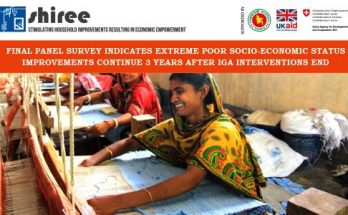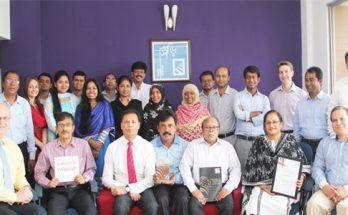Quick Facts
The United Nations’ (UN) International Day of the World’s Indigenous People is observed on August 9 each year to promote and protect the rights of the world’s indigenous peoples.
Background of the Day
The International Day of the World’s Indigenous People is celebrated on August 9 each year to recognize the first UN Working Group on Indigenous Populations meeting in Geneva in 1982. On December 23, 1994, the UN General Assembly decided that the International Day of the World’s Indigenous People should be observed on August 9 annually during the International Decade of the World’s Indigenous People.
In 2004 the assembly proclaimed the Second International Decade of the World’s Indigenous People (2005-2014). The assembly also decided to continue observing the International Day of Indigenous People annually during the second decade. The decade’s goal was to further strengthen international cooperation for solving problems faced by indigenous peoples in areas such as culture, education, health, human rights, the environment, and social and economic development.
In April 2000, the Commission on Human Rights adopted a resolution to establish the UN Permanent Forum on Indigenous Issues that was endorsed by the Economic and Social Council. The forum’s mandate is to discuss indigenous issues related to culture, economic and social development, education, the environment, health and human rights.
Symbols
Artwork by Rebang Dewan, a Chackma boy from Bangladesh, was chosen as the visual identifier of the UN Permanent Forum on Indigenous Issues. It has also been seen on material to promote the International Day of the World’s Indigenous People. It features two ears of green leaves facing each other and cradling a globe resembling planet earth. Within the globe is a picture of a handshake (two different hands) in the middle and above the handshake is a landscape background. The handshake and the landscape background are encapsulated by blue at the top and bottom within the globe.
Plan for observing” International Day of the World’s Indigenous People” in AMADER project, 2010
NETZ Partnership for Development and Justice in partnership with 3 partner NGOs has been implementing a Scale-up project, “Advancement of Marginalised Adivasis Deprived of Economic Resources (AMADER) since May 2009. The AMADER Project is supported by the UKaid in partnership with the Government of Bangladesh (GoB) under the shiree programme.
The project is aiming at taking 26000 extremely poor populations out of extreme poverty. The project targets 10% poorest of the population of the Barind Tract, mainly Adivasis who are seriously affected by food insecurity and are living a marginalized life. Old aged, female headed and disabled are preferred among the target group. It covers 9,000 extreme poor households (HHs) in two batches. In Year 1, 3000 HHs and in Year 2, 6000 HHs.
AMADER Project aims to reduce their economic, political and social exclusion; and to increase the livelihood opportunities available to them.
Considering the poverty situation and the higher density of adivasis, the project is working in following Upazilas:
| PNGO | Upazila and district |
| Ashrai, Rajshahi | Patnitola, Dhamoirhat, Shapaher, Porsha, Mohadebpur and Niamotpur Upazila under Naogaon district Upazillas |
| Sachetan, Rajshahi | Godagari and Tanore Upazilas under Rajshahi district and Gomostapur and Nachole Upazilas under Chapai Nawabgonj district. |
| Pollisree, Dinajpur | Ghoraghat, Hakimpur, Nawabgonj, Birampur and Fulbari upazilas under Dinajpur district. |
Day observation Context in AMADER Project
Adivasis in the Barind Tract include Santal, Oraon, Pahan, Barman, Mahali, Mahato and Rajbangshi among others. The adivasi population is higher in the selected districts. A large share of the adivasis in the proposed location belongs to the extreme poor, which means low consumption, hunger and malnutrition (<1,600 kcal/day), illiteracy, as well as lack of access to education, health services, and safety net support. Adivasis are deprived of their rights to land, forest, other natural resources, customs, traditions and self-determination.
Objectives:
- Awareness Raising of Indigenous Peoples about their rights.
- Voice raising and mainstreaming of marginalized indigenous people.
- Increasing mobility of marginalized indigenous people specially women.
Major Activities:
- Issue Based Discussions in 221 groups under 5 upazilas of Naogaon District
- Rally & Mass gathering in 14 Upazilas and 1 Thana Complex under 4 districts
- Memorandum submission to 5 Upazila Nirbahi Officers of Naogaon District
- Cultural Show at 5 upazilas under Naogaon District
- Participate in seminar in Rajshahi to be organized by NGOs and Civil Society organizations involved with Adivasis
- Monitoring & Documentation
Activity plan
| Sl. | Activities | Date & Time | Place & Venue | Who & How |
| 1. | Issue Based Discussion
ü Develop discussion paper. ü Staff member orientation. |
1 – 31August | Court Yard Meeting at groups in 6 upazilas under Naogaon district | Weekly Meeting by Ashrai field staff |
| 2. | Rally & Mass gathering
ü Preparatory Committee meeting. ü Festoon & Banner. ü Linkage & communication. Selection & Orientation for presenter and speaker. |
9th and (11.00 am) | Upazila/thana Campuses of 14 working Upazilas | Ashrai, Pollisree and Sachetan in collaboration with Adivasi Organizations as well as other NGOs, Civil society and GOB. |
| 3. | Participate in grand rally to be organized in Rajshahi city | 7 August, | Safwan community centre, Greater road, Rajshahi city | In collaboration with other NGOs, Civil society and GOB. |
| 4. | Memorandum submission | 9th August (11.00am) | UNOs of all upazilas | Rally & Submit to UNOs by Ashrai |
| 5. | Cultural Show | 9th August (11.00am-12.00am) | Upazila Campus of 5 upazilas under Naogaon district. | Ashrai.
Adivasi Cultural team will perform. |


